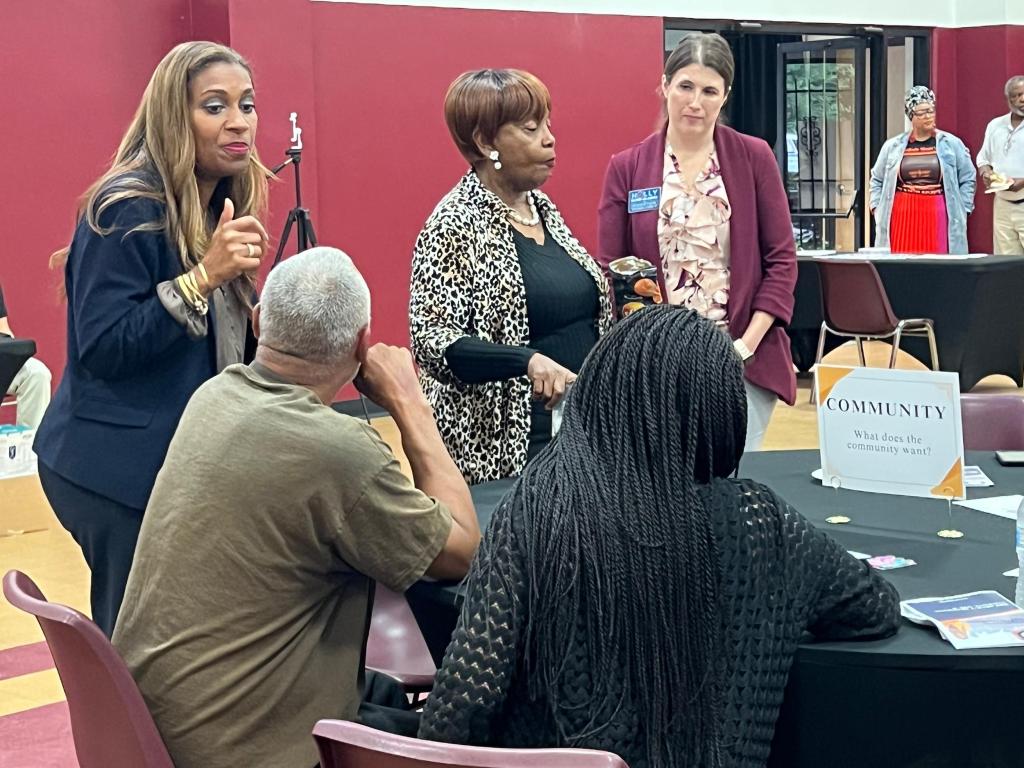Several Fifth Ward residents attended a Cancer Summit to discuss the long-lasting effects of creosote on their community. The Fifth Ward Cancer Cluster Summit took a look at the high cancer rates in the area and possible solutions for residents impacted by the contaminated Union Pacific Rail Yard soil.
“We were honored to bring together such a distinguished group of experts and community leaders for this important event,” said At-Large Council Member Letitia Plummer, who is also the organizer of the summit. “Our goal is to foster dialogue, build relationships, and inspire concrete actions that can make a real difference in the lives of the people of the Fifth Ward and Kashmere Garden communities.”
The Summit, which ran from April 24-26, featured keynote speakers, panel discussions, and interactive sessions. A range of topics were discussed such as cancer clusters, environmental health, community engagement, and policy solutions. At a community roundtable last night, residents were able to meet with stakeholders to get their questions answered firsthand.

Plummer said it was important to bring medical experts into the conversation like Dr. Stephanie Miles Richard of the Morehouse School of Medicine, who specializes in toxicology focusing on health equity and disparities.
“The missing link has been the correlation between the creosote in the groundwater in the soil and the cancer,” she said. “The reason why I engaged the Morehouse School of Medicine is because who is better than doctors of color to understand the environmental injustice that happens across the country.”
Testing begins
Officials with Union Pacific will soon be visiting residents’ homes in Houston’s Fifth Ward to perform testing on their soil for the presence of toxic chemicals in northeast Houston near a contaminated rail yard.
Residents have been dealing with this for years and claim Union Pacific has been dragging its feet. Now new testing will reveal if a greater portion of the community may have been affected. Testing will begin in June, according to details released by the EPA on the upcoming investigation.
Now owned by Union Pacific, groundwater beneath the rail yard site has been said to be contaminated by creosote, a likely human carcinogen, that was used decades prior to treat wooden railroad ties. Earlier this year, a legal agreement was reached between the EPA and Union Pacific that requires the company to investigate the extent of contamination at its site. The EPA’s involvement comes after residents have been fighting for years to get the site cleaned up.
“We have heard from elected officials. We have heard from public health agencies, from numerous folks that there are concerns about exposure to contaminants in this neighborhood and these communities, and what those contaminants can mean for public health,” said Casey Luckett Snyder, the Regional Project Manager with the EPA Region 6, at a public meeting. “So we are here at this point to lead an investigation to start to determine, where does that contamination come from? And how does it impact public health?”
Union Pacific has done some cleanup and sampling at the site, but residents are concerned they’re still being exposed to toxic chemicals. State health officials have confirmed significantly higher than normal cancer rates in the area for both adults and children.
Before Union Pacific purchased the property, it operated for years as a place where wooden railroad ties would be dipped into black tar-like material — allowing it to weather storms, and live much longer rot-free.
As the years went on, neighbors started getting sick. Testing performed by the Houston Health Department revealed cancer clusters in the Fifth Ward. Children were even diagnosed with lymphoma.
In addition to creosote, public health officials have also raised concerns about the potential presence of dioxins, highly toxic cancer-causing chemicals, that may have formed in the wood treatment process. Initial samples taken by the Houston Health Department last year found concentrations of dioxin in soil samples near the railyard site.
Synder with the EPA said in urban environments dioxins can come from various sources and one of the goals of the upcoming investigation is to track the contamination from its source and determine its extent in the neighborhood. To do that they’ll compare samples from the railyard site with samples taken from hundreds of homes in the surrounding area.
“This, I’ll be honest with you, is going to be a massive endeavor,” said Synder. “It is going to be a really big investigation.”
They’ll be looking for four different types of contaminants: dioxins, creosote, PCP, and PAHs.
In addition, Snyder said they’ll also be studying whether creosote contamination in the groundwater could be affecting the air inside people’s homes and businesses.
Testing is expected to begin in June. It will be overseen by the EPA, but paid for by Union Pacific.
Look for our in-depth report “A Toxic Crisis” in the May 4 edition of The Defender.











